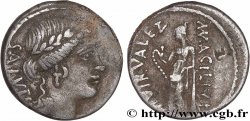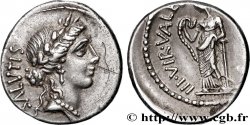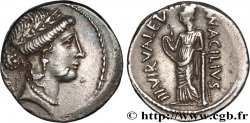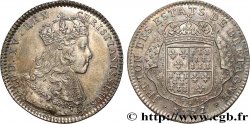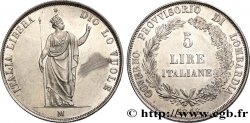v41_0424 - ACILIA Denier
MONNAIES 41 (2009)
Prezzo di inizio : 145.00 €
Valutazione : 250.00 €
Prezzo realizzato : 145.00 €
Prezzo di inizio : 145.00 €
Valutazione : 250.00 €
Prezzo realizzato : 145.00 €
Tipo : Denier
Data: 49 AC.
Nome della officina / città: Grèce ou Illyrie, avec Pompée
Metallo : argento
Titolo in millesimi : 950 ‰
Diametro : 19,5 mm
Asse di coniazione : 6 h.
Peso : 3,54 g.
Commenti sullo stato di conservazione:
Exemplaire sur un flan ovale avec le métal légèrement pincé des deux côtés à 6 heures au droit et à 12 heures au revers. Portrait de toute beauté et de haut relief. Joli revers de style fin. Magnifique patine de médaillier avec des reflets mordorés et bleutés irisés
N° nelle opere di riferimento :
Pedigree :
Cet exemplaire provient de la collection M. R. de Dijon
Diritto
Titolatura diritto : [SALVTIS].
Descrittivo diritto : Tête de Salus (la Santé) laurée à droite.
Traduzione diritto : “Salutis”, (De la Santé).
Rovescio
Titolatura rovescio : [(MN)] ACILIVS/ III VIR VALE[TV].
Descrittivo rovescio : Valetudo (la Santé) debout à gauche, appuyée sur une colonne de la main gauche et tenant un serpent de la main droite.
Traduzione rovescio : “Manius Acilius Triumviri Valetudinis”, (Manius Acilius triumvir monétaire Valetudo).
Commento
Poids léger. Pour ce type, M. Crawford a relevé une estimation de 651 coins de droit et de 723 coins de revers ce qui pourrait correspondre à une fabrication totale comprise entre un million et demi et trois millions de deniers. C’est l’un des types monétaires qui permit de financer le parti sénatorial au début de l’année 49 avant J.-C. quand ce dernier rejoignit Pompée qui avait quitté Rome. Les auteurs du Catàlogo ont différencié trois variétés.
Light weight. For this type, Mr. Crawford noted an estimate of 651 obverse dies and 723 reverse dies, which could correspond to a total production of between one and a half and three million denarii. This is one of the monetary types that allowed the financing of the senatorial party at the beginning of 49 BC when the latter joined Pompey who had left Rome. The authors of the Catàlogo differentiated three varieties
Light weight. For this type, Mr. Crawford noted an estimate of 651 obverse dies and 723 reverse dies, which could correspond to a total production of between one and a half and three million denarii. This is one of the monetary types that allowed the financing of the senatorial party at the beginning of 49 BC when the latter joined Pompey who had left Rome. The authors of the Catàlogo differentiated three varieties







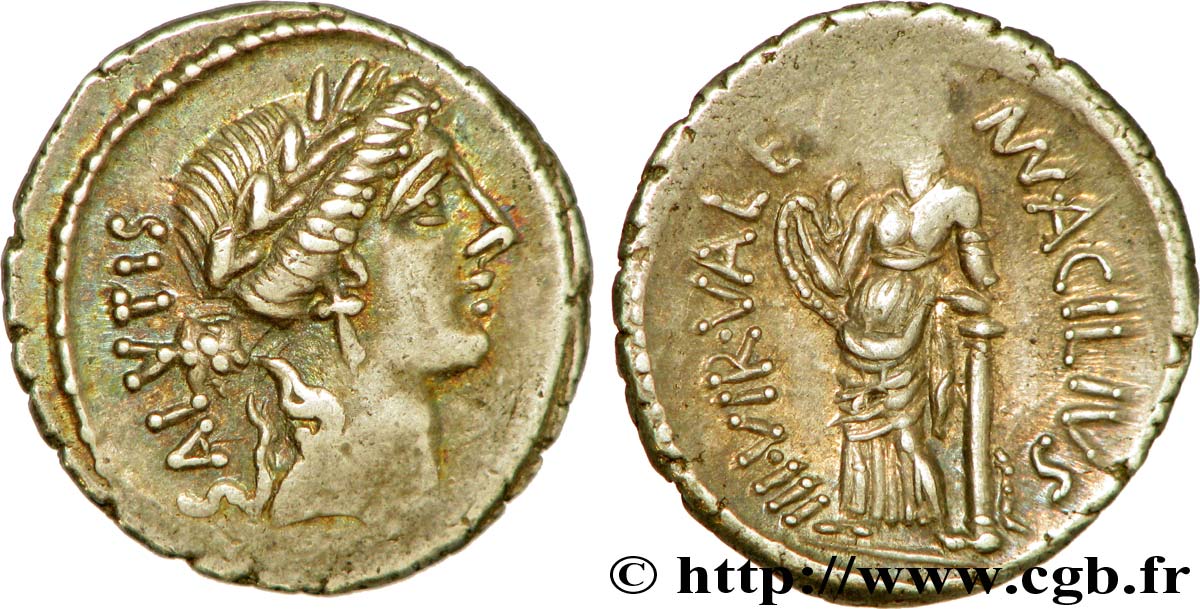
 Segnalare un errore
Segnalare un errore Stampate la pagina
Stampate la pagina Condividi mia selezione
Condividi mia selezione Fai una domanda
Fai una domanda Consegnare / vendere
Consegnare / vendere
 Descrittivo
Descrittivo